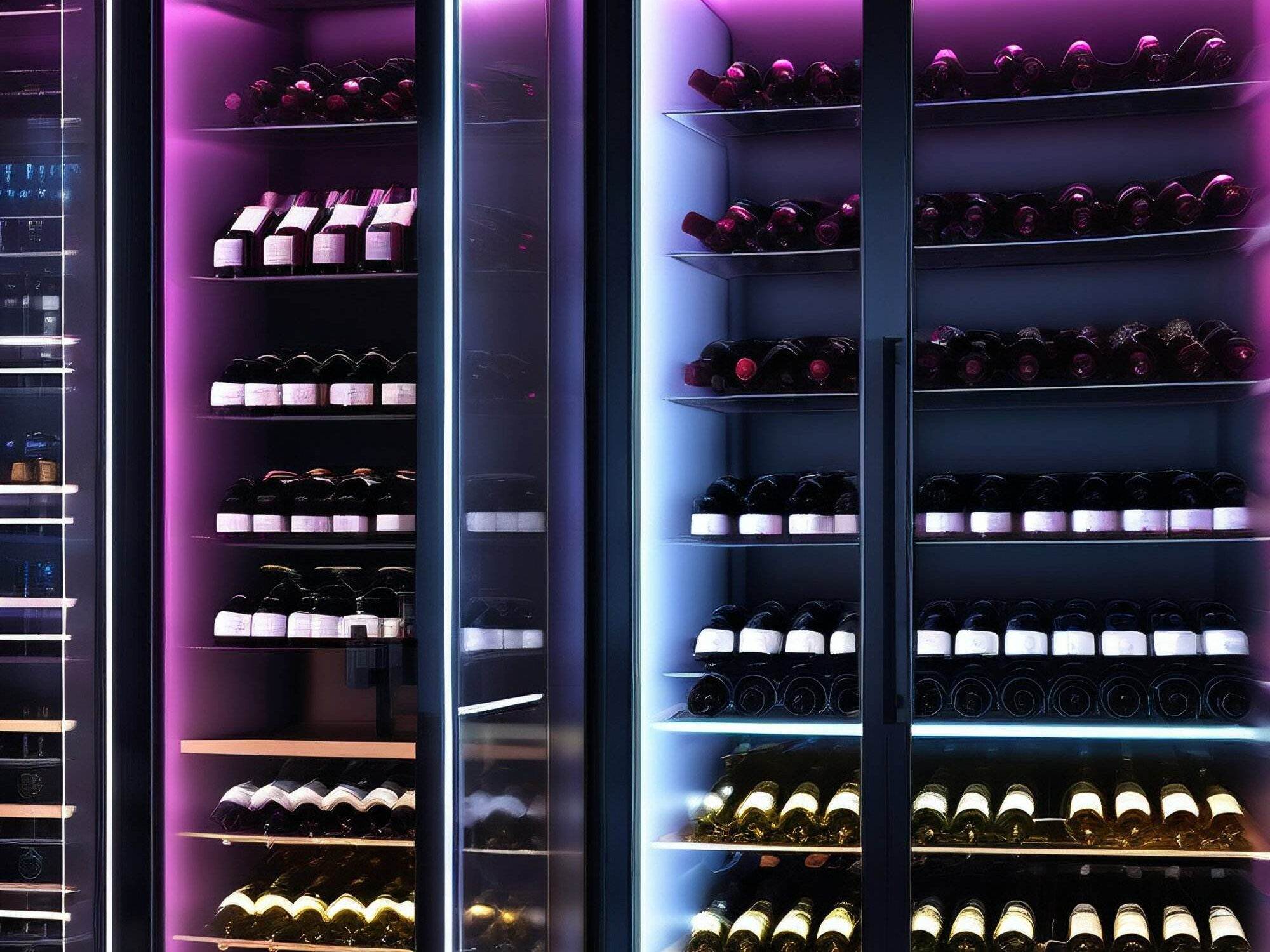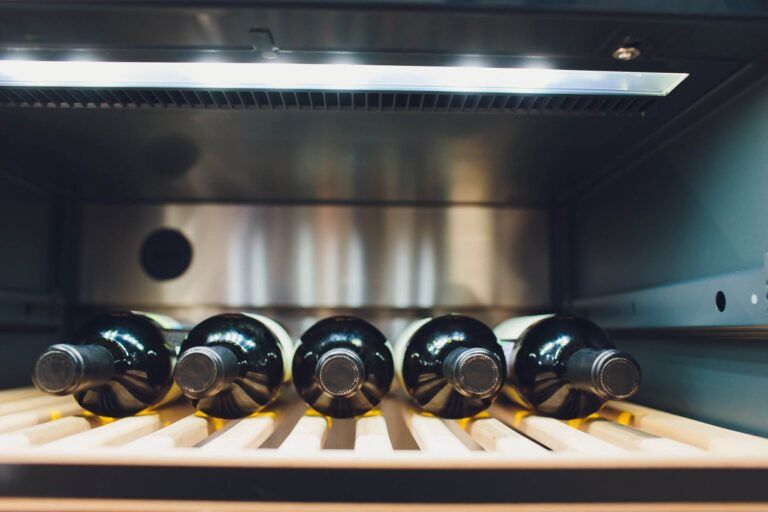LED vs. Traditional Lighting: Enhancing Your Lafayette Wine Collection
When it comes to curating a wine collection, the importance of proper lighting cannot be overstated. LED lighting has emerged as a preferred choice for wine enthusiasts and collectors alike, offering a multitude of benefits that enhance both the preservation and presentation of wine. One of the most significant advantages of LED lighting is its low heat emission.
Traditional incandescent bulbs generate a considerable amount of heat, which can adversely affect the temperature stability of a wine cellar. In contrast, LED lights produce minimal heat, ensuring that the environment remains consistent and conducive to wine aging. Moreover, LED lighting is known for its longevity.
Unlike traditional bulbs that may need frequent replacements, LEDs can last for years, significantly reducing maintenance efforts and costs. This durability is particularly beneficial for wine cellars, where consistent lighting is essential for both functionality and aesthetics. Additionally, LEDs are available in various color temperatures, allowing collectors to choose the perfect ambiance for their space.
Whether you prefer a warm glow that mimics candlelight or a cooler tone that highlights the vibrant colors of your wine bottles, LED lighting can be tailored to suit your preferences.
Key Takeaways
- LED lighting helps maintain the quality of wine by emitting little to no heat and UV rays, which can negatively impact wine aging and preservation.
- Traditional lighting, such as incandescent or fluorescent bulbs, can produce heat and UV rays that can harm the quality of wine and affect its aging process.
- Proper lighting is crucial for wine aging and preservation, as exposure to light can cause chemical reactions in wine that lead to off-flavors and aromas.
- LED lighting can enhance the aesthetic of your wine collection by providing customizable and adjustable lighting options to showcase your bottles.
- LED lighting is more energy-efficient than traditional options, resulting in lower energy costs and reduced environmental impact.
The Drawbacks of Traditional Lighting for Your Wine Collection
Traditional lighting options, such as incandescent and fluorescent bulbs, come with several drawbacks that can negatively impact a wine collection. One of the primary concerns is the heat generated by these light sources. As mentioned earlier, excessive heat can disrupt the delicate balance required for optimal wine aging.
Fluctuations in temperature can lead to premature aging or spoilage, ultimately diminishing the quality of the wine. For collectors who invest significant time and resources into their collections, this risk is unacceptable. Another drawback of traditional lighting is its tendency to emit ultraviolet (UV) rays.
UV light can cause chemical reactions in wine, leading to undesirable flavors and aromas. Over time, exposure to UV rays can degrade the quality of the wine, making it essential for collectors to consider their lighting choices carefully. While some traditional bulbs may offer UV protection, many do not, leaving wines vulnerable to damage.
This risk underscores the importance of selecting lighting solutions that prioritize the preservation of your valuable collection.
The Impact of Lighting on Wine Aging and Preservation
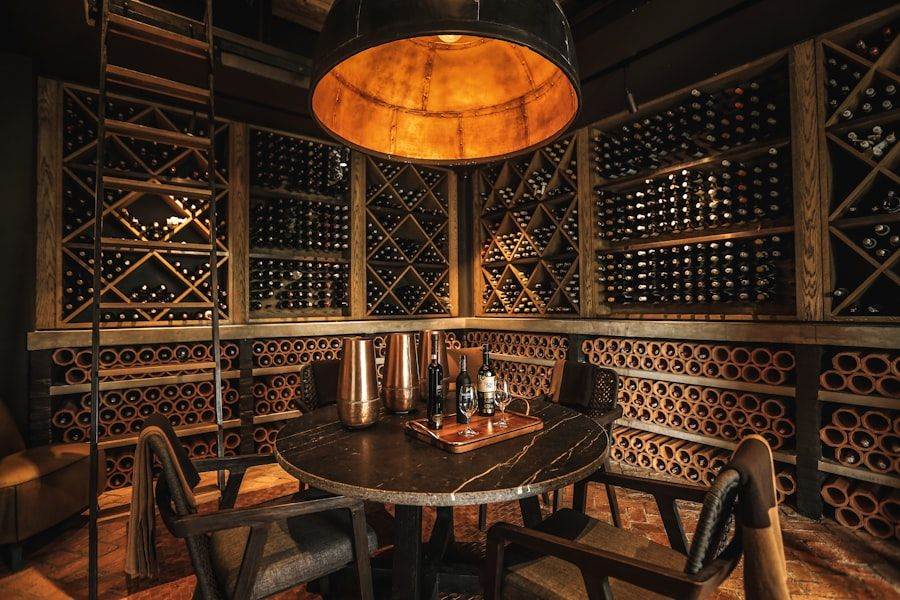
The aging process of wine is a complex interplay of various factors, including temperature, humidity, and light exposure. Lighting plays a crucial role in this equation, as it can influence both the chemical composition and sensory characteristics of wine. Studies have shown that prolonged exposure to light—especially UV light—can accelerate the aging process and lead to undesirable changes in flavor and aroma profiles.
For collectors aiming to preserve their wines for years or even decades, understanding the impact of lighting is essential. In addition to UV exposure, the intensity and duration of light can also affect wine preservation. Bright lights can create an environment that encourages oxidation, which can spoil delicate wines.
Therefore, it is vital for collectors to implement lighting solutions that minimize exposure while still providing adequate visibility for showcasing their collection. By choosing LED lighting with low UV emissions and adjustable brightness levels, collectors can create an optimal environment that supports the aging process while protecting their wines from potential harm.
How LED Lighting Enhances the Aesthetic of Your Wine Collection
Beyond its functional benefits, LED lighting also enhances the aesthetic appeal of a wine collection. The ability to customize color temperatures allows collectors to create a visually stunning display that highlights the beauty of their bottles and labels. A well-lit wine cellar can transform an ordinary storage space into an elegant showcase, inviting guests to admire the collection while also providing an intimate atmosphere for tastings.
Furthermore, LED lighting can be strategically placed to accentuate specific features within a wine cellar. For instance, backlighting shelves or illuminating individual bottles can draw attention to rare vintages or unique labels. This thoughtful approach not only enhances the visual experience but also adds a layer of sophistication to the overall design of the space.
Collectors can take pride in showcasing their wines in an environment that reflects their passion and dedication to the art of winemaking.
The Energy Efficiency of LED Lighting Compared to Traditional Options
Energy efficiency is another compelling reason to consider LED lighting for your wine collection. Traditional incandescent bulbs consume significantly more energy than their LED counterparts, leading to higher electricity bills over time. In contrast, LEDs use up to 80% less energy while providing the same level of brightness.
This efficiency not only benefits your wallet but also contributes to a more sustainable approach to energy consumption. Moreover, the long lifespan of LED lights means fewer replacements are needed over time, further reducing waste and energy usage associated with manufacturing and disposing of traditional bulbs. For environmentally conscious collectors, making the switch to LED lighting aligns with a commitment to sustainability while still ensuring that their wine collection is preserved and showcased effectively.
The Cost-Effectiveness of LED Lighting for Wine Storage
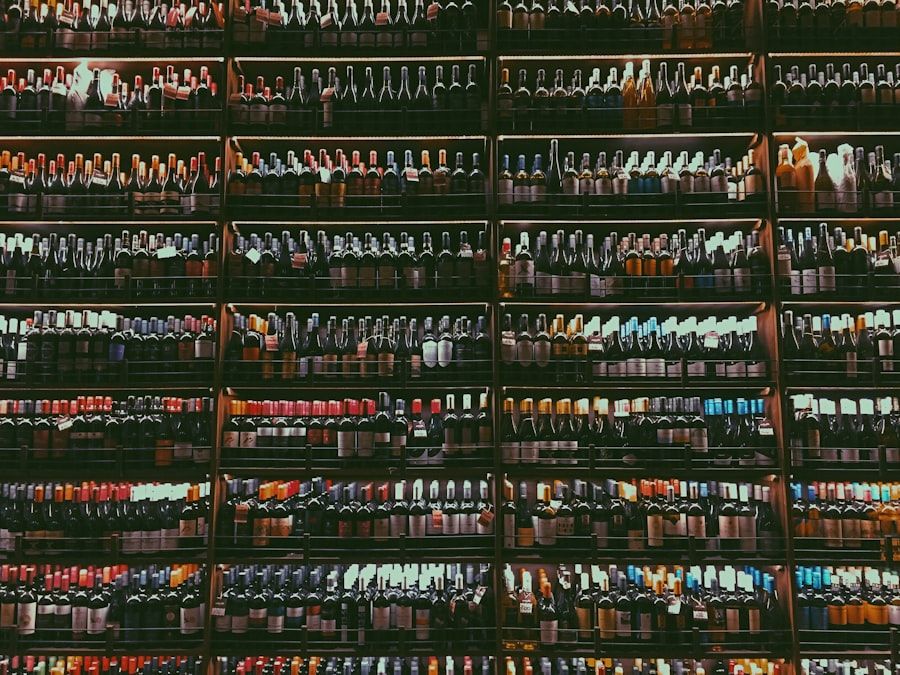
While the initial investment in LED lighting may be higher than traditional options, the long-term cost-effectiveness cannot be overlooked. The combination of energy savings and reduced maintenance costs makes LEDs a financially sound choice for wine storage solutions. With their extended lifespan and lower energy consumption, collectors will find that they recoup their initial investment over time through decreased utility bills and fewer bulb replacements.
Additionally, the enhanced preservation capabilities offered by LED lighting can lead to better outcomes for your wine collection. By minimizing the risk of spoilage or degradation due to improper lighting conditions, collectors can maintain the value of their wines over time. This aspect further solidifies LED lighting as a cost-effective solution for those serious about their collections.
Considerations for Choosing the Right Lighting for Your Wine Collection
When selecting lighting for your wine collection, several factors should be taken into account to ensure optimal results. First and foremost, consider the type of LED lights that best suit your needs. Options range from strip lights and recessed fixtures to pendant lights and wall sconces.
Each type offers unique advantages depending on your cellar’s layout and design. Another important consideration is color temperature. Warmer tones (around 2700K) create a cozy atmosphere while cooler tones (above 4000K) provide a more modern look.
Think about how you want your collection to be perceived and choose accordingly. Additionally, dimmable options allow you to adjust brightness levels based on different occasions—whether hosting a tasting event or simply enjoying a quiet evening at home.
Making the Switch: Transitioning to LED Lighting for Your Wine Storage
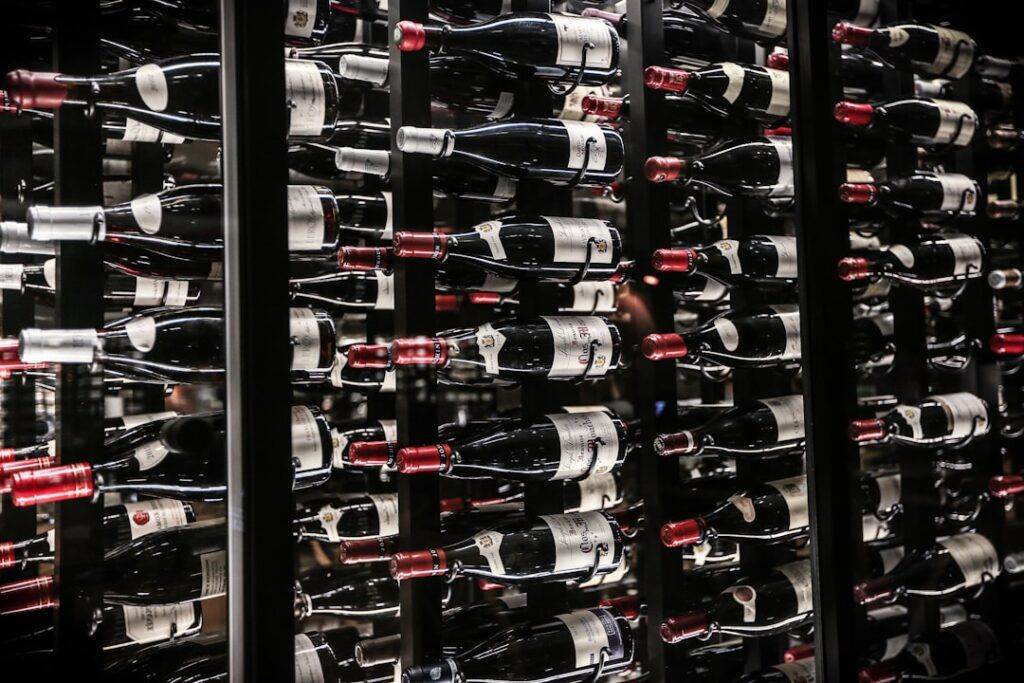
Transitioning from traditional lighting to LED solutions may seem daunting at first, but it can be a straightforward process with careful planning. Start by assessing your current lighting setup and identifying areas where improvements can be made. Consider consulting with professionals who specialize in custom wine cellars and accessories—such as Wine Hardware of Walnut Creek—to ensure you select the best products for your specific needs.
Once you have chosen your new LED fixtures, installation can often be done as a DIY project or with professional assistance if needed. After installation, take some time to experiment with different brightness levels and color temperatures until you find the perfect ambiance for your collection. With these steps completed, you will not only enhance the aesthetic appeal of your wine cellar but also create an environment that supports the long-term preservation of your cherished wines.
In conclusion, embracing LED lighting for your wine collection offers numerous benefits that extend beyond mere aesthetics. From energy efficiency and cost-effectiveness to improved preservation capabilities, LEDs provide an ideal solution for any serious collector looking to protect their investment while showcasing it beautifully. By making informed choices about your lighting options, you can create an optimal environment that enhances both the enjoyment and longevity of your prized wines.
FAQs
What are the main differences between LED and traditional lighting?
LED lighting uses light-emitting diodes to produce light, while traditional lighting uses incandescent or fluorescent bulbs. LED lighting is more energy-efficient, has a longer lifespan, and produces less heat compared to traditional lighting.
How does LED lighting enhance a wine collection in Lafayette?
LED lighting provides a more consistent and cooler light, which is ideal for showcasing wine bottles. It also emits less heat, reducing the risk of spoiling the wine. Additionally, LED lighting can be customized to create different ambiance and highlight specific areas of the wine collection.
Are there cost savings associated with using LED lighting for a wine collection?
Yes, LED lighting is more energy-efficient and has a longer lifespan compared to traditional lighting, resulting in lower energy and maintenance costs over time. Additionally, the reduced heat output of LED lighting can contribute to lower cooling costs in wine storage areas.
Can LED lighting be customized for different wine display needs?
Yes, LED lighting can be customized to create different ambiance and highlight specific areas of the wine collection. It can be adjusted to different color temperatures and brightness levels to suit the specific display needs of the wine collection.
Are there any potential drawbacks to using LED lighting for a wine collection?
One potential drawback of LED lighting is the initial higher cost of installation compared to traditional lighting. However, the long-term cost savings and benefits often outweigh this initial investment. Additionally, some individuals may prefer the warmer color tones produced by traditional lighting for their wine collection display.

